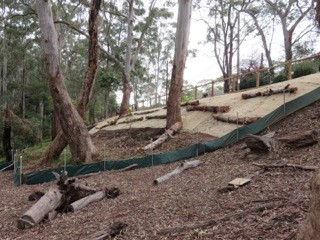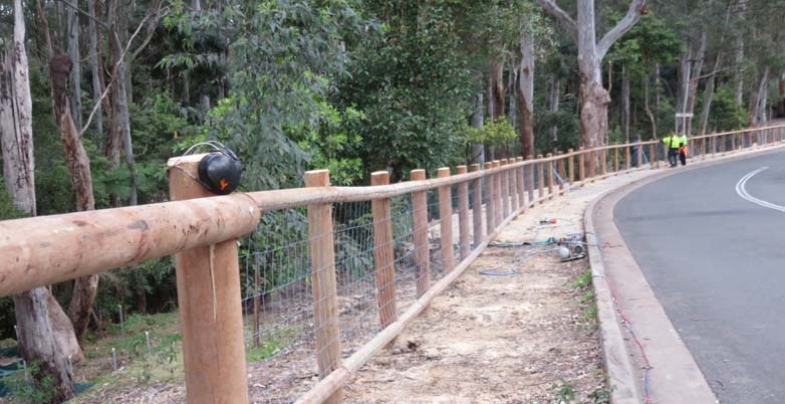Sheldon Forest in Turramurra contains the second largest area remaining of the critically endangered Blue Gum High Forest covering an area of 5.4 ha. Sheldon Forest is linked to Rofe Park and Comenarra Creek Reserve so that the bushland extends from the railway line at Turramurra to Lane Cove National Park and provides an essential wildlife corridor that can potentially link Lane Cove National Park to Ku-ring-gai Chase National Park. It has been degraded over the years from fill from Warragal Rd and the rail cutting, weed invasion, storm water erosion, and waterlogging, feral animals, rubbish dumping and suburban encroachment.
In 2014 Ku-ring-gai Council signed a BioBanking Agreement with the NSW government under the Linking Landscapes through Local Action grant program. Council agreed to improve the reserves’ biodiversity values by undertaking management actions. These actions will create biodiversity credits and in return council has received grant funding.
Note: In many BioBanking schemes a developer purchases the credits and the money is used to restore a vegetation community elsewhere to make up for the loss caused by the development – see NSW Offsets Policy: A Dubious Way to Prevent Loss of Biodiversity (STEP Matters, Issue 181).
The BioBanking Agreement establishes a fund of $1.6 million that provides an ongoing, annual income to council to manage the bushland. The fund will give council annual management payments of between $100,000 and $130,000 for the first 20 years of the agreement, and thereafter about $40,000 each year in perpetuity. Council will contribute an additional $469,000 over three years to help manage the sites.
Action so Far
Anyone driving down Warragal Road, Turramurra just over the railway line will have noticed a lot of activity. Council has given us information on the works completed or in progress:
- In 2014 a sediment basin was constructed near the railway line and a large amount of ‘foreign’ soil was removed that had been dumped when the railway line was constructed. Creek stabilisation works were completed that were designed to encourage natural revegetation.
- Weed removal and preparation for ecological burns near Albion and Jubilee Avenues.
- Weed removal and stabilisation along Warragal Road.
- The revegetation of approximately 1800 m2 of Blue Gum High Forest using appropriate species and densities.
- Extensive fencing, both temporary and permanent, to assist with stabilisation and regeneration after the weed removal.
There will be much more work to do to ensure the permanent restoration of the native vegetation so that the weeds do not take over again.
 It should be noted that the sloping land adjoining Warragal Road is part of the council road reserve and is fill. As such it should be managed as a buffer to the Blue Gum High Forest in Sheldon Forest. The boundary between the two should be clearly delineated so that any erosion from the slope is managed and does not degrade the forest soil.
It should be noted that the sloping land adjoining Warragal Road is part of the council road reserve and is fill. As such it should be managed as a buffer to the Blue Gum High Forest in Sheldon Forest. The boundary between the two should be clearly delineated so that any erosion from the slope is managed and does not degrade the forest soil.
The stormwater outlet from Warragal Road discharging directly into Sheldon Forest is also a concern as it will have an impact on the viability of Blue Gum High Forest species in the affected areas. In the long term this stormwater should be redirected to an alternative sub-catchment.
The permanent fencing along Warragal Road is receiving a lot of comment. It is meant to be ‘non-intrusive’. Maybe it will weather to a natural colour?

